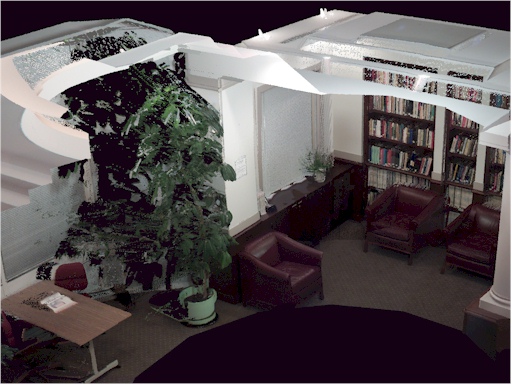
Developing Hardware and Software
for Image-Based Rendering

As an alternative to trying to create photorealistic
computer-graphics environments, this research combines hardware
and software development in the pursuit of visualizing computer
models of complex three-dimensional environments taken from
sets of real-world images rather than composed of polygon-based computer
graphics. In the hardware arena, it is the latest step in
our 16-year history of developing custom graphics hardware systems at
the leading edge of rendering performance: Pixel-Planes (early 1980s-1997),
PixelFlow (became operational in 1997), and ImageFlow
(currently in the design stage).
Some potential effects of image-based rendering include:
- The ability to construct immersive 3D environments for real places,
enabling a new class of applications in entertainment, virtual tourism,
telemedicine, telecollaboration, and teleoperation.
- The implementation of systems that produce high-quality, 3D
imagery with much less hardware than used in the current generation of
high-performance graphics systems.
- A hybrid with a conventional graphics system. A process called
post-rendering warping may combine with a conventional graphics
system to enable immersive 3D systems to be implemented over long
distance networks and broadcast media.
We are using Intel-based computers in our continued development of
image-based rendering software and hardware. Desktop workstations
with 3D acceleration support the development of new image-based
rendering algorithms. We are developing image-based rendering
algorithms that appear to be appropriate for acceleration with Pentium
III New MMX instructions. A high-speed laser rangefinder attached
to an Intel-based PC is used to acquire the necessary range
information, generating about 1GB of data per scene.
Server systems are being put to the task of
processing huge amounts of raw source data used in image acquisition
and analysis. Desktop systems will assist our team in designing
custom chips to go into the hardware systems we are designing.
We also plan to investigate the use of an Intel host
for this next generation of graphics hardware. Our previous systems
have been hosted on UNIX workstations.
For additional information, please see the Department's Image-Based Rendering research
page.
Last content review: 19 July 2001
Content managed by:
pubs@cs.unc.edu


